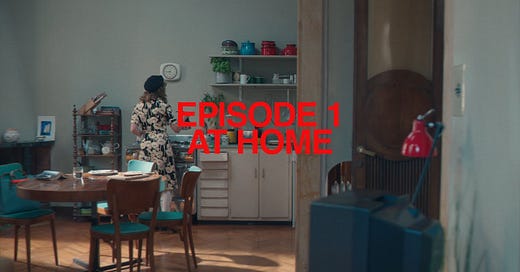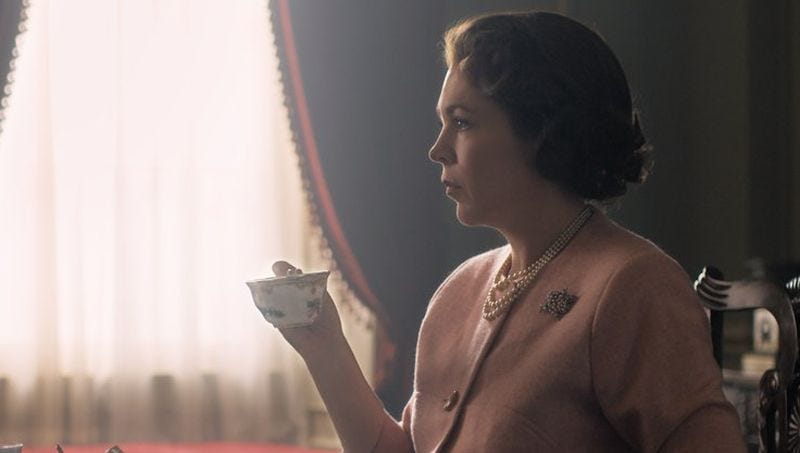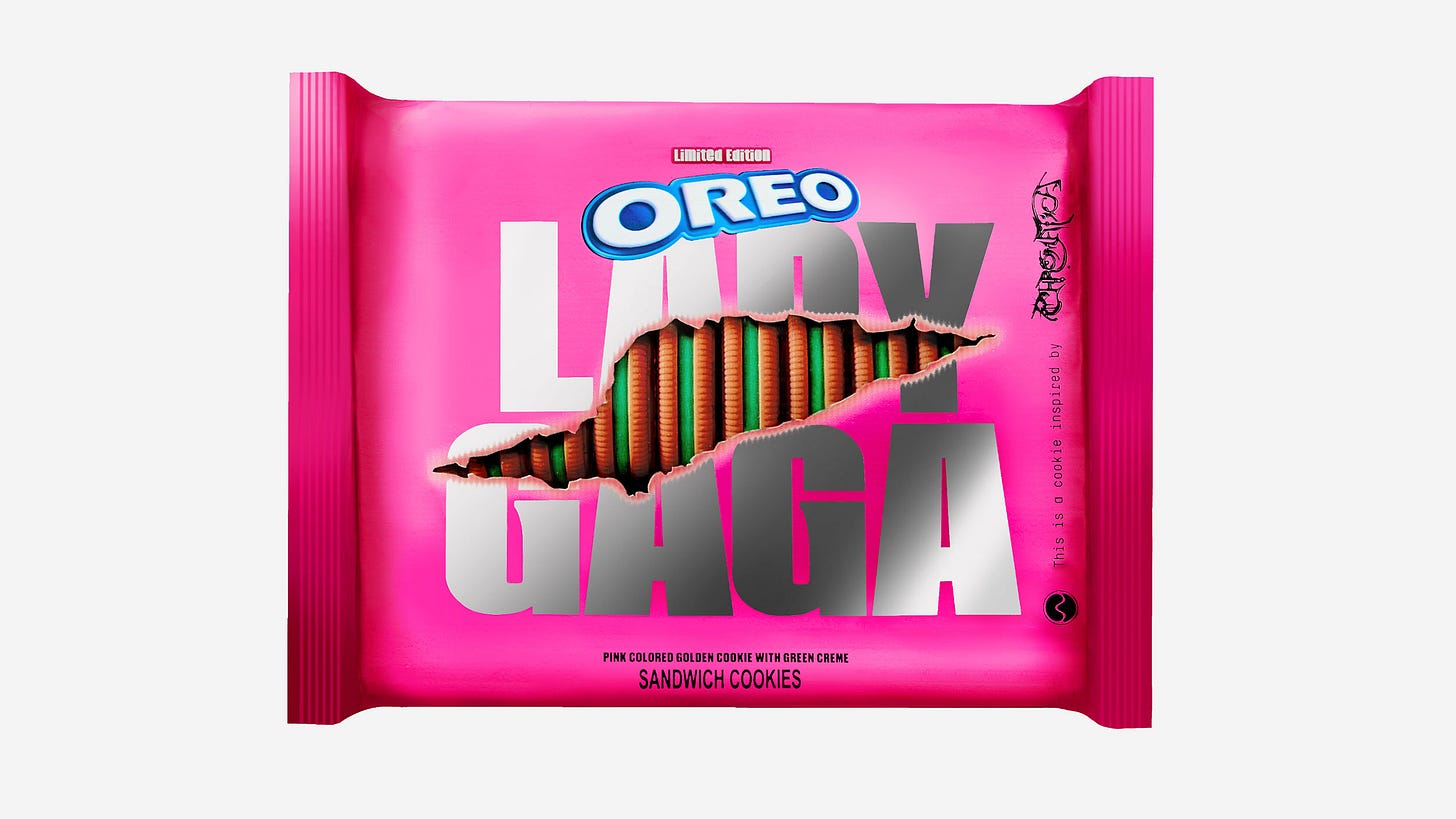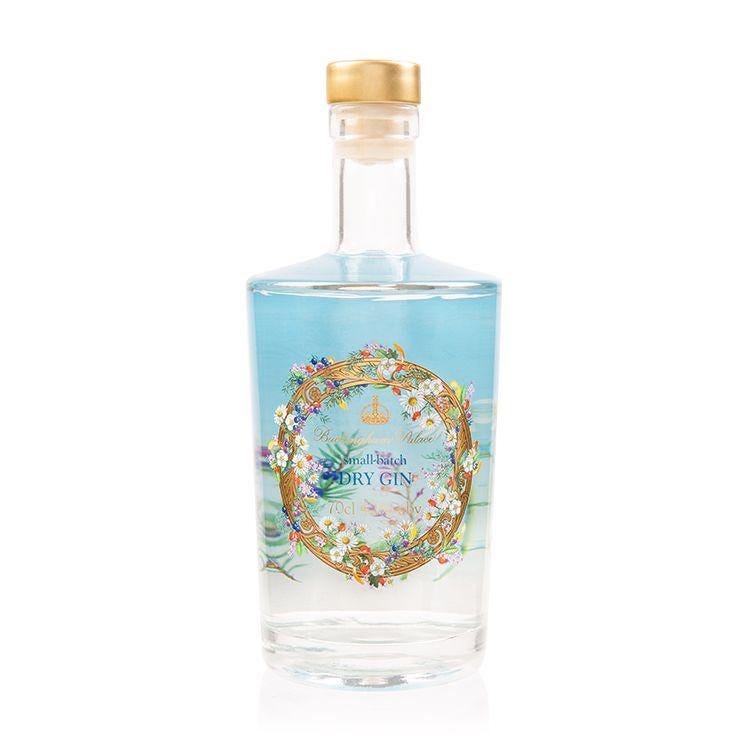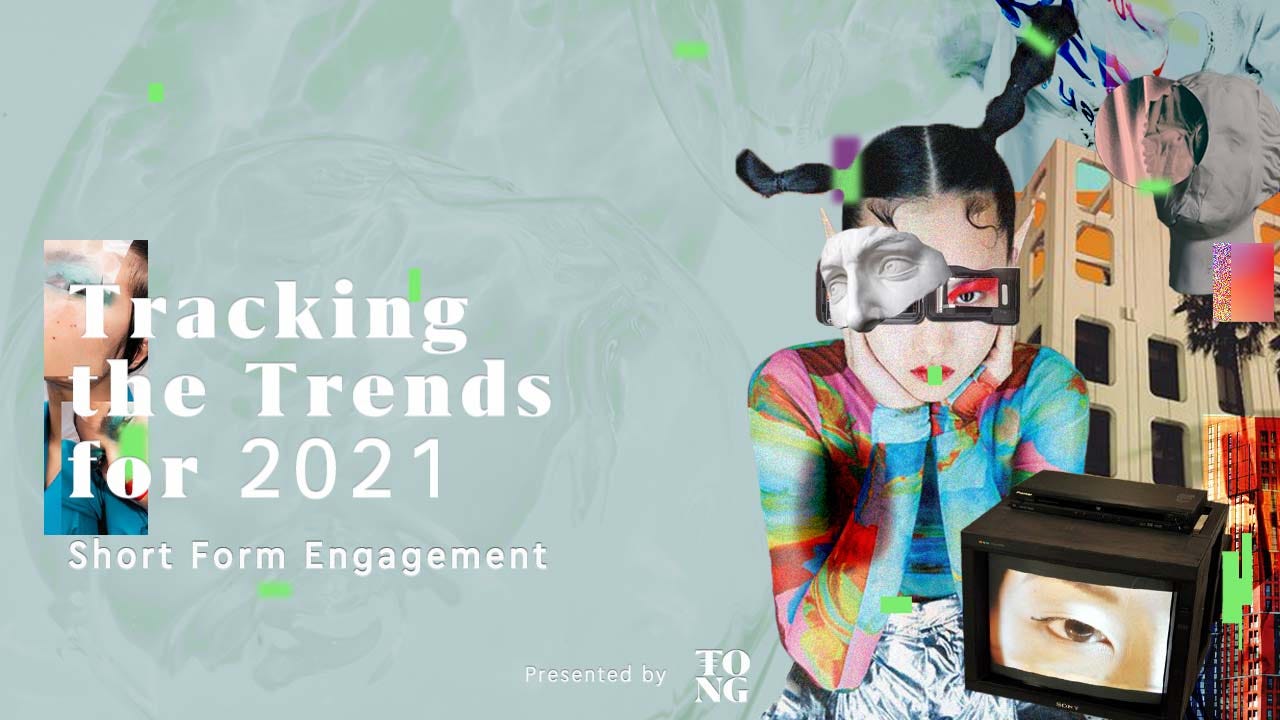How Online Content Commerce Became King in 2020
Plus: What Lady Gaga and Queen Elizabeth II have in common, why cultural content is crucial, and our TikTok Take.
The Content Commerce Insider newsletter highlights how brands create content to drive revenue. If you have received our newsletter from a friend or colleague, we hope you will subscribe as well and follow us on LinkedIn and Instagram.
The impact of the coronavirus pandemic has accelerated many brand marketing trends that were already in motion, from the championing of inclusivity and philanthropy to digital-first, content-driven commerce. Not only has the pandemic triggered a plethora of morale-focused storytelling, but it has also forced more brands to digitize due to physical event cancellations and store closures; the realm of online content commerce has consequently expanded.
According to retail marketing intelligence agency Edited’s recent report, “Phygital Shows and Digital Activations,” 108 out of 209 European fashion labels that showed their latest collections on YouTube were using the platform for the first time ever; brands have had to digitize in 2020. Heather Ibberson, a retail analyst at Edited, told Content Commerce Insider: “Consumers’ time spent on social media increased as they were eager to consume both educational and entertaining content, resulting in brands doubling down on their video content, e.g. posting at-home workouts and live streaming DJ sets.”
Naturally, due to a surge of time spent indoors, consumers have become more digitally engaged. Jocelyn Dong, a luxury analyst for Mintel, said that the market research firm “found that more than 80% of surveyed consumers utilize WeChat every day, and 37% of consumers are engaged with TikTok every day,” emphasizing why brands need to focus on content commerce. “Most consumers form an initial impression of brands through their content platforms.”
In terms of e-commerce, entertainment sells, and China’s billion-dollar livestreaming industry is veritable proof. Chinese streaming sites have even hosted online gigs and festivals, from Bilibili’s “Bedroom Online Cloud Music Festival” to Taobao and Alibaba’s “No Meeting Concert,” which attracted 4 million viewers and raised RMB 570,000 ($86,000) for frontline medical workers.
The skyrocketing influence of music videos offers another example of how entertainment is increasingly driving purchasing decisions: Lyst recently reported that the video for BTS’s “Dynamite” resulted in a 128% increase in sales of bucket hats, while searches for leopard, tiger, and snake prints rose by 201% following the release of Cardi B and Megan Thee Stallion’s “WAP” video. In August 2020, Drake even strategically previewed his Certified Lover Boy collaboration with Nike in his video for “Laugh Now, Cry Later.”
Engaging and immersive content is what captures the wavering attention span of today’s digital audiences, and is frequently achieved through partnerships that cross industries. Gucci’s virtual film festival GucciFest — streaming on YouTube, Weibo, and GucciFest.com from November 16 to 22 — exemplified a boundary-pushing content-commerce strategy. To promote their new collection, the Italian luxury house partnered with filmmaker Gus Van Sant to present a seven-part series, “Ouverture of Something That Never Ended,” featuring members of the global Gucci gang, such as Harry Styles, Billie Eilish, Jeremy O. Harris, Lu Han, and Florence Welch. In another creative move, GucciFest also featured films from 15 emerging designers, from Ahluwalia to Mowalola and Collina Strada, tapping into 2020’s trending community spirit.
Edited’s Ibberson notes that the current trend for brand collaborations shows no sign of ebbing, and anticipates that more brands, designers, and retailers will follow. “The #ShareTheMic campaign on Instagram was a great example of collaboration to amplify Black women’s voices — something that brands could seek to do as well.”
Collaboration enhances content commerce by not only reaching wider audiences but also by increasing the cultural capital of a brand, as exemplified by Burberry’s new partnership with British footballer Marcus Rashford to help young people worldwide, which went viral.
There had already been a surge in ethics-focused brand strategies prior to the pandemic. Leading fashion and culture publisher Dazed Media’s 2020 trend report on the future of youth culture reports that more than 60% of Gen Z say race, equality, environmental issues, women’s rights and LGBTQIA+ rights influence their purchase decisions; this mentality has undeniably broad appeal. “When many people lost their jobs and close family members, a hard sell approach rang tone-deaf and offensive. Instead, brands needed to take a more human tone,” says Ibberson.
Due to a public focus on morality, fashion has evolved from its famed surrealism to realism; photographer Tim Walker recently told the New York Times that he feels “uncomfortable making fashion pictures, in the traditional sense.” Brands need to be relatable before anything else in 2020, with projects like Marc Jacobs’ beautifully mundane short documentary “A New York Story” about his life during lockdown, and Rihanna’s July 2020 Savage x Fenty campaign, which invited Instagram users to take selfies to be featured as part of it, all succeeding in breaking down the boundaries between brand and consumer.
Brands are experiencing a pivotal transition as collaboration efforts appear limitless, with quality entertainment and meaningful storytelling both being key areas of focus. Facing a time of crisis, the tsunami of content commerce reflects trends of relatability, intimacy, and, above all, relief in entertainment.
- by Sadie Bargeron
Mentioned in today’s newsletter: Burberry, Crocs, Crunchyroll, Gucci, Headspace, Ikea, Instagram, KFC, L’Oréal, Louis Vuitton, Lyst, Marc Jacobs, Nike, Oreo, Pepsi, Rockstar Games, Savage x Fenty, Sony, TikTok, Xigua Video, YouTube.
CollaBrands: Lady Gaga and the Queen — How Celebrity Influencers Are Expanding Their Brands
by Steven Ekstract
What do Lady Gaga and Queen Elizabeth II have in common? They are both celebrity influencers utilizing content for commerce. Specifically, they are utilizing the tool of brand licensing to create greater brand visibility, sell new consumer products, and create new revenue streams.
As mentioned in last week’s column, licensed brand extensions into products succeed when they are trend-right and appear as natural extensions of the core IP. During a global pandemic, understanding what consumers want and how to package and sell it are key to successful commerce.
What could be more trend-right during this time than Lady Gaga-branded hot pink and neon green Oreos, released to promote her latest album, "Chromatica,” which dropped in January? According to Bake Magazine. a trade publication for the bakery industry, snacking has become a Covid-19 pastime for millions of housebound consumers. In fact, the coronavirus pandemic figured heavily in the findings of the second annual State of Snacking report released on November 11 by Oreo’s parent company, the Chicago-based Mondelez International. Forty-six percent of respondents said they were snacking more during the pandemic than before it, compared with 42% who said the same and 12% who said less. Fifty-two percent said snacking has been a “lifeline” during the pandemic.
In licensing, retail acts for products the way theater does for film. There are more than 40,000 grocery retailers in the United States alone, and the potential for a branded popular cookie in that many outlets would offer significant visibility for Lady Gaga’s new album. The “limited edition” cookies — with her name prominently featured on the packaging — can drive greater sales for Oreo and boost Lady Gaga’s earnings (no touring while the coronavirus continues to spread translates to a need for ancillary revenue streams). Smart collaboration!
In the case of Queen Elizabeth, licensing provides her with an entirely new form of royalty. Her “Royal Marketing Team” (I imagine them with “RMT” crests on their blazers) had a genius idea with the recent development of a branded gin. The Queen’s entry into the spirits business was marked by the release of two high-end products with ingredients sourced from her gardens: the Buckingham Palace Gin, released over the summer, and the newer Sandringham Gin, named after the Queen’s country estate, where the royal family gathers for the Christmas holiday.
According to the “RMT” marketing machine, the 94-year-old monarch’s drink of choice is gin (rumor has it she knocks down four a day). And for the millions who have been watching the past four seasons of “The Crown” on Netflix, it all makes perfect sense. It seems that the necessity of creating and marketing this Royal gin was precipitated by the $22 million in revenues lost from the absence of tourism to the royal palaces.
As an aside, the average American eats 19,000 cookies in their lifetime, according to OnePoll.com. If we do the math, and the Queen has been drinking four gins a day since the age of 18, that adds up to an astonishing 110,200 gins in her lifetime. Given her longevity, this leads one to surmise that consuming gin may be a healthier alternative to snacking on Oreos. Perhaps her “RMT” can use that in their marketing materials? Coincidentally, what have emerged as two of the best performing consumer products categories during the pandemic? Snacks and alcoholic beverages.
It is no coincidence that the Queen’s “RMT” is using Netflix’s popular series as the content driver to launch the commerce of the royal gins. The series follows Queen Elizabeth through the trials and tribulations that she, her family, and the United Kingdom experienced each decade since her ascension to the throne. While the royal family is likely not terribly pleased with certain characterizations (Elizabeth’s three sons are less than sympathetic), the popularity of the show — and continued fascination that we commoners have with royalty — has not been missed by the Queen’s “RMT.” And how cheeky of them to make the licensed product gin, which they have very publicly promoted as the Queen’s drink of choice, and apparently one she imbibes daily.
Understanding brand licensing as a marketing tool that drives increased sales and royalty income is a regular feature of Content Commerce Insider.
Steven Ekstract is Managing Director of Global Licensing Advisors, a consultancy that provides companies with insight and strategic direction to succeed in the $300 billion a year licensing business. Ekstract is the founder and former Publisher of License Global magazine, the leading information source for the consumer licensing business. He can be reached at Steven@globallicensingadvisors.com.
Why Cultural Content is Key to the Future of Short Form Engagement
Presented by TONG
For the first half of the 20th century, Tianqiao was a microcosm of Beijing’s cultural life. Among its narrow streets and stall-lined squares an informal carnival of fire breathers, crosstalk comics, acrobats, erhu players, and wrestlers offered locals a smorgasbord of human creativity and a taste of the sublime.
Today, however, performances continue across four stages at the Beijing Tianqiao Performing Arts Center, which was erected as part of the area’s redevelopment, but the true spirit of Tianqiao has migrated online to China’s short-video platforms.
Since gaining widespread popularity in 2016, China’s cluster of short-video apps, most prominently, Douyin, Kuaishou, Xigua, and, in some regards, Bilibili, have continually disrupted the country’s internet landscape — and, by extension, how cultural content is consumed. The lip-syncing and synchronized dance routines with which many of the platforms became synonymous are, in fact, only two examples from a diverse cultural ecosystem. Just as visitors to Tianqiao sampled widely, curiously, and haphazardly, so too today’s users swipe between bizarre feats of physical sculpture, calligraphy lessons, tours of contemporary art galleries, and graffiti demonstrations.
High-Culture for the Small Screen (and Mass Audience)
Watching demonstrations of traditional Chinese furniture joinery may not sound riveting, but for woodwork artists Zhang Keke and Zhuang Zhe, short-videos have become the primary means of reaching new audiences and potential customers. EHOOWOOD, their project centered on applying contemporary flair to classical-style Chinese tables, bookcases, and beds, has YouTube videos exceeding a million views and a Bilibili channel with more than 130,000 followers. But in recent months, Douyin has proven the most effective communication tool.
“By watching our videos, the viewers understand the process of making wooden furniture,” says Zhang from EHOOWOOD’s Hangzhou workshop. “From the quality of the materials to the high level of craftsmanship required, we’re not hoping to become internet celebrities here; we’re trying to connect and share, to make our brand last a hundred years.”
Traditional Chinese arts, once the domain of high culture, have begun to transform as young, mass audiences have found new identities in wearing flowing Han dynasty-style garments, playing video games designed with meticulous accuracy to Chinese heritage, and watching hit dramas created in collaboration with prominent museums and cultural sites. Moreover, Douyin is the latest locus of this trend with users discovering new arts content through the platform’s power of recommendation, and ability to group and propel niche content.
As with most everything digital in 2020, the pandemic has accelerated this development and short-video consumption more broadly. New viewing habits begun under lockdown are enduring with a mid-year report from a Chinese internet industry association showing close to 90 percent of China’s internet users regularly use a short-video platform, averaging more than 100 minutes a day.
Read the full article on Jing Culture & Commerce
TikTok Take: 2020 Brand Highlights, U.S. Ban Blocked Again
TikTok rounds up best 2020 brand campaigns: Hashtags took center stage on TikTok’s roundup of 2020’s top branded initiatives, which focused on meaningful and entertaining content, from L’Oréal’s #letsfaceit campaign encouraging people to wear protective face masks, to Pepsi’s feel-good #ThatsWhatILike, telling users to unapologetically be themselves. Another thriving hashtag, #TikTokmademebuy, reflects the platform’s power to influence, and the most viral products were ones which could be tried and tested through the short video format. TikTok-native brands also tapped into content trends, striving for seamless integration on the For You page with the hottest music and dance moves, or by creating usable filters such as gaming company EA’s, which turns users into a Sim.
Second U.S. judge blocks TikTok ban: More than a month after Pennsylvania-based federal judge Wendy Beetlestone blocked the U.S. Commerce Department’s proposed TikTok ban, U.S. District Judge Carl Nichols of Washington followed suit, stating that legal authority had been “overstepped” and that the Commerce Department “acted in an arbitrary and capricious manner by failing to consider obvious alternatives.” A federal appeals court is to hear arguments on December 14, but the latest news strengthens hopes that the Walmart-Oracle deal to buy TikTok’s U.S. operations will go through.
TikTok saw huge expansion in 2020, but at what cost? RestOfWorld journalist Louise Matsakis discusses the challenges TikTok faces going forward: “[Its] fate depends on whether TikTok will effectively manage the massive community it has built or, instead, make the same mistakes its predecessors did when it comes to free speech, misinformation, and safety.” Matsakis explores how a solely algorithm-steered platform could fuel widespread misinformation and segregation, and how that might be combatted.
Investigation into eating disorder accounts: The Guardian reports that it’s easy to find pro-anorexia content on TikTok, despite the platform’s efforts to block weight-loss advertisements and related hashtags. TikTok responded by announcing further investigation and a crackdown on the promotion of eating disorders.
Instagram adds shopping to TikTok rival Reels: Yesterday, Instagram launched Shopping in Reels, allowing creators to tag products in their videos, and add a “Branded Content” tag to increase promotion transparency. It’s another sign of how livestreaming is slowly gaining traction in the West.
Music labels are creating profiles for dead artists: Late global superstars George Michael, Whitney Houston, and John Lennon now have verified TikTok accounts, hosted by their labels, Universal Music Group and Capitol Records. Metro reports: “As well as introducing younger audiences to older music, the motivation for launching dedicated profiles for these artists is likely to keep that sweet royalty money rolling in.”
Global Content Commerce News
Taking inspiration from Travis Scott’s Fortnite concert earlier this year, the organizers of the Complex fashion and music festival transformed the event into a virtual experience that’s “essentially a game built entirely around shopping.” The Verge
And Rockstar Games is following in the footsteps of Fortnite and Roblox with the planned launch of a virtual nightclub in Grand Theft Auto Online that will feature real-world DJs. NME
KFC has produced a hotly anticipated “Lifetime Original Mini-Movie,” starring Mario Lopez as a sexy Colonel Sanders, that will debut on December 13. Content Commerce Insider
And erstwhile KFC collaborator Crocs has been a major winner in the pandemic era, with its stock price nearly quadrupling thanks to savvy marketing in China and to frontline workers along with high-profile celebrity partnerships. Forbes
Meditation app Headspace is partnering with Vox Media Studios to produce three branded shows for Netflix in 2021 — The first, an introduction to the practice hosted by Headspace co-founder Andy Puddicombe, will premiere just in time for everyone’s New Year’s resolutions on January 1. The Hollywood Reporter
Sony is buying anime platform Crunchyroll from AT&T for $1.175 billion, a deal that will give the Japanese entertainment giant access to Crunchyroll’s 3 million paying subscribers around the world. Reuters
Louis Vuitton is bringing new meaning to the concept of a luxury pop-up shop with a sleek mobile camper that can be reserved for visits, including sales assistants. Input
The luxury sector has been missing out on opportunities for marketing via product placement on TV and streaming platforms, music videos, and games, but that’s starting to change. Vogue Business
For luxury brands, access to and effective use of customer data can be a major driver of economic and competitive advantages through advanced personalization. The Fashion Law
The Ikea catalog has ended its 70-year print run, and the digital version will also be suspended as the Swedish furnishing brand shifts its focus to developing its online stores. Business Insider
Apple, Amazon, and Google top the list of America’s most-loved brands in the Covid-19 era. Visual Capitalist

